Worthy Farm is where you can find musical stars from across the globe, but the Wildlife Trust was hoping the Glastonbury revellers would find ‘Peat’. The ancient soil found across the UK was the theme for this year’s stall at Glastonbury. (Peatlands | Derbyshire Wildlife Trust)
Reaching new audiences with Finding ‘Peat’ at Glastonbury
Adam Dosunmu Slater
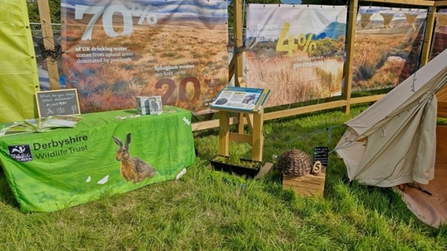
Adam Dosunmu Slater
It was a fitting location for the topic. Somerset is home to largest amount of peat in the Southwest of England and the largest remaining wetland in England. With 60,000 hectares of lowland peat, the county has a nationally significant carbon store which contains almost 11 million tonnes of carbon. (Peatland solutions | Somerset Wildlife Trust)
Derbyshire is also home to Peatlands. The county has both highland and lowland peat across the county, with the moorlands and peak district the largest homes. Our projects, like Wild Peak, look to support these peatlands. (Wild Peak | Derbyshire Wildlife Trust)
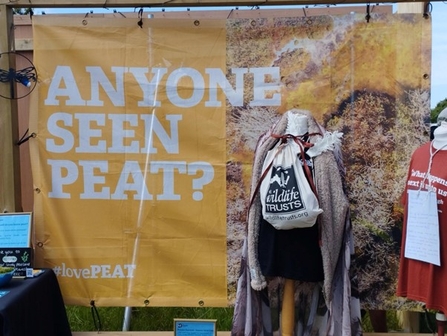
Adam Dosunmu Slater
Glastonbury finds Peat
Armed with our activities and Peat facts, we opened on Thursday to large footfall. Not having to compete with stars like Shania Twain for afternoon entertainment meant were busy with lots of people coming to learn about Peat.
To our surprise there was a mixed array of knowledge on the topic. Some young gardeners came and said they always bought Peat free compost but were unaware of why it was important. They were shocked to find out the speed in which Peat grows, roughly 1mm a year, and could see how its usage was unsustainable, and it needed to be stopped.
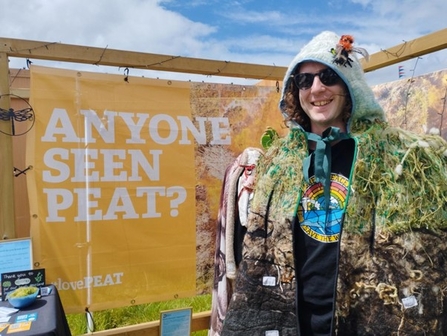
Adam Dosunmu Slater
Other visitors, like the pink haired raver I met on Thursday, was a fountain of knowledge on Peat having studied the soil during his PHD. We were enthralled as he shared interesting facts he had learnt whilst doing a field trip in the peat bogs of Scotland.

Adam Dosunmu Slater
The main attraction to the stall was our temporary tattoo stand. Visitors were encouraged to get Peat animals like dragonfly’s and lizards tattooed on them. It was a great success, with hundreds of tats adorned across festivalgoers. It also gave us access to a crowd of people we wouldn’t usually interact with. Once drawn in, they too were interested to learn about the benefits of Peat, such as its ability to store carbon and help combat climate change.
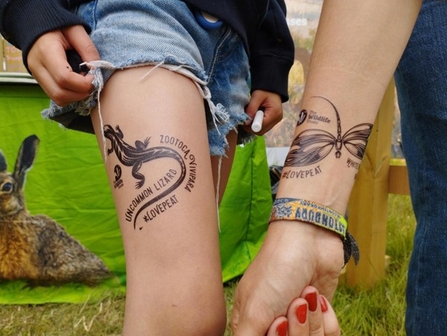
Adam Dosunmu Slater
Younger visitors also got the chance to learn about peat through our children stories every afternoon, read by our emperor moth lady, Fee from Leicester Wildlife Trust. They went down very well, with one group of children returning with their own winged costumes later in the festival.
Other highlights included our ‘Peat-za’ boxes, which visitors could open with each slice revealing a Peat fact. Our six-thousand-year-old bog oak also brought some wows from the crowds – as they learnt about Peats amazing ability to preserve things. Hundreds of years ago, people used to put their dairy products into Peat bogs as the lack of oxygen in the soil means it can keep food fresh longer than your household freezer.
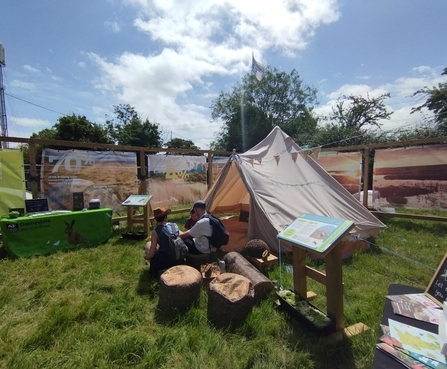
Adam Dosunmu Slater
Visitors to our stall were reminded that work is needed to be done to protect our precious peatlands. Over 80% of the UK's peatlands have been damaged and are in need of restoration. Much of this is down to our farming practices. Take the mushroom for example. This product is often grown by supermarket suppliers in peat, even though it can be grown in many different soils.
Overall, our Glastonbury presence was a fantastic promotion and worthwhile effort for the Trusts. We connected with people that we’d usually not reach, gave valuable lessons on the importance of peat and got visitors to think about how our actions impact on the natural wonders in the UK.

